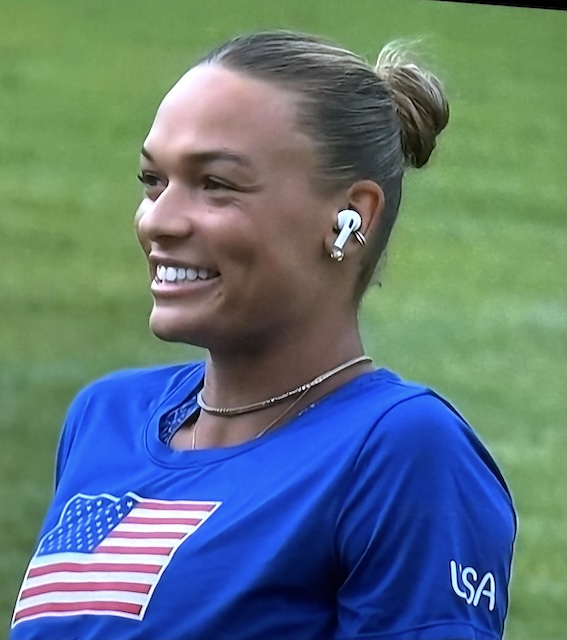I don’t watch a lot of TV news these days but when I do happen upon a cable news interview the odds are pretty good the interviewee will have the iconic Apple AirPods in his ear. That’s how he’s hearing the questions from the news guy. It never occurred to me the AirPod microphones might be the source of the audio.
Tonight I watched an interview (on NBC) with one of the Olympic athletes who was using AirPods to hear the questions from the interviewer.

I first noticed this in some of the interviews with family members (of the athlete) sitting in the stands. I’m assuming this works like the earpiece (IFB) news anchors use to communicate with the control room. In every instance (that I’ve seen) they’ve been Apple AirPods when there are probably lots of devices NBC could have used.
As I do with increasing frequency these days, I asked ChatGPT if she had any information on this.
You’re right that NBC and other networks have been seen using Apple AirPods during interviews, including with Olympic athletes and their families. The use of AirPods in these situations is a practical solution for a few reasons:
1.Wireless Convenience: AirPods are wireless, which makes them less cumbersome compared to traditional wired earpieces or over-the-ear headphones. This is especially useful in dynamic or remote settings, like interviewing athletes or their families who may be moving around or in informal environments.
2.High-Quality Audio: AirPods provide good audio quality, which ensures that the person being interviewed can clearly hear the questions being asked. This clarity is crucial for maintaining the flow of live interviews, especially in noisy or crowded environments like those often encountered during the Olympics.
3.Discreet Appearance: AirPods are small and less noticeable on camera compared to larger headphones or traditional broadcast earpieces. This makes them a more aesthetically pleasing choice for televised interviews, where the focus is on the interviewee rather than the equipment.
4.Ease of Use: AirPods are easy to connect to various devices, such as smartphones, which are often used by reporters or production teams in the field to conduct interviews. Their ease of use and quick setup make them an efficient choice for live broadcasting situations.
5.Ubiquity and Familiarity: AirPods are widely recognized and used, so many people are already familiar with how to use them. This reduces the need for technical adjustments or explanations during setup.
NBC’s use of AirPods is a modern adaptation to the challenges of broadcasting in various environments, offering a blend of practicality, quality, and aesthetics.


